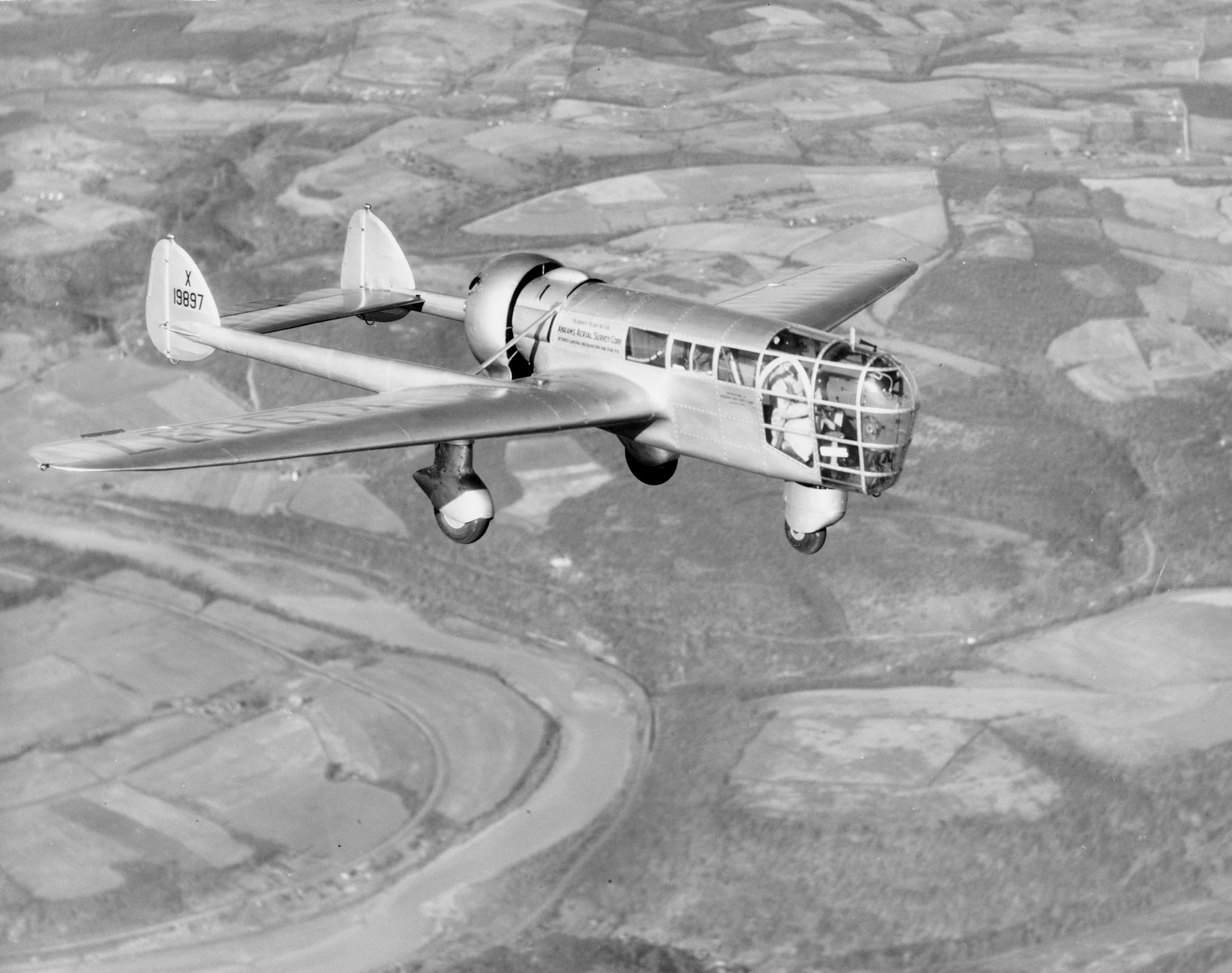Abrams P-1 Explorer
The Abrams P-1 Explorer was a classic example of form following function, in its case the specialized function of surveying, aerial photography and mapping. When Talbert Abrams established the Abrams Air Craft Corporation in Lansing, Mich., he learned that the U.S. Army was interested in such an airplane and he envisioned a civilian market for it as well. Former Stinson engineers Kenneth Ronan and Andrew Edward Kunzl helped design the semi-monocoquepusher monoplane with aluminum skin over a welded steel tube frame, twin booms aft and fixed tricycle landing gear under streamlined fairings. The nacelle, with its extensive Plexiglas glazing, was in front of everything, affording the two-man crew an unobstructed view forward.
The payload included an Abrams Instruments C-3 camera that could produce 650 9-by-9-inch photographs per flight. The camera ports were hermetically sealed to maintain cabin pressure up to 20,000 feet. Wingspan was 38 feet 6 inches, length 27 feet 9 inches and height 6 feet 7 inches. The plane weighed 2,100 pounds empty and 3,400 pounds gross.
When it first flew in November 1937, the P-1 Explorer was powered by a 330-hp Wright R-975E Whirlwind 9-cylinder radial engine with a NACA cowling and a Hamilton Standard two-bladed variable-pitch propeller. Soon afterward, however, Abrams installed a 365-hp Wright 975E-1 that gave it a maximum speed of 200 mph and a cruising speed of 175 mph. The service ceiling increased to 25,000 feet at a climb rate of 1,400 feet per minute. Range was 1,200 miles.
In carrying out survey and mapping flights, the Explorer proved a longitudinally stable platform, ideally suited for the task for which it was designed. By that time, however, war clouds were gathering over Europe and China, and in 1938 the U.S. Army Air Corps was reconsidering its requirements for the possible conflict to come. As far as photoreconnaissance went, a modified high-speed fighter seemed more likely to return with its photos than a specialized flying eye chugging deliberately along at 200 mph. The Abrams found no market in the civilian world, either. Nevertheless, the sole Explorer built survived long enough to be lent by Abrams to the National Air and Space Museum in 1948 and permanently donated to the museum in 1975. In 1981 it was taken to the Paul E. Garber facility in Silver Hill, Md., where it currently awaits restoration.

